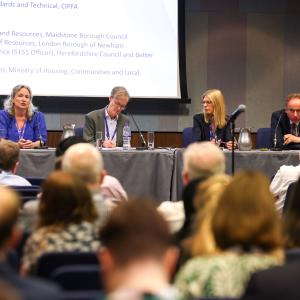Integration is the new/old buzzword around Westminster. But on the ground, in health and local government, the mood is less harmonious
So, after an age of prepping and procrastination, is the public sector finally ready for its close-up? Are the Berlin Walls and silos about to come tumbling down, as service managers accept it would be easier just to get on with it and move in together?
Judging from the excited talk about pooled budgets and service integration, it would seem so. Nowhere is this more evident than in health and social care, where a £3.8bn Better Care Fund is lubricating the process.
Jointly controlled by councils and the NHS, and with 14 integrated care pioneers (see cover feature, pages 22-27), it’s all leading to a ‘quiet revolution’ in provision, says care minister Norman Lamb.
It’s also, everyone hopes, going to save some much-needed cash. The chancellor’s ‘hard truths’ New Year message was that, post-2015, there’s another £25bn of cuts to come. Other than quibbling over the small print, the Opposition has not demurred.
There’s a strong economic case then for public services to cuddle up closer together. For ministers, there’s a political one too.
Health and care services – as Rob Whiteman argues (page 10) – have been like ‘ships in the night’. They need to get their act together over issues like hospital discharge if the government wants to avert even worse A&E headlines.
With all these factors stacking up in favour of integration, what, you may ask, could possibly go wrong? Plenty, if past experience is any judge – and not just in the NHS.
‘Whole system’ working has been a government aspiration for decades. But Community Budgets have been painfully slow to take off, and the less said about Whitehall’s ‘transformational’ shared services the better.
The mere fact that Sir Michael Lyons’ housing commission (page 28) is having to address the ‘right to grow’ housing across authority boundaries speaks volumes about the barriers to cooperation.
As for health and social care, turf wars have already broken out, with NHS England’s medical director Sir Bruce Keogh channelling fears that councils will use the Better Care Fund ‘for filling in potholes and other significant things.’
The truth is that personalised, integrated services don’t come cheap. And the fund is not new money: the bulk of it will come from acute sector budgets.
In these circumstances - and with councils wanting payback after years of cuts – what’s more likely? Lamb’s peace-breaks-out quiet revolution or, as one adult social services director puts it in PF, ‘a right barney’?
This opinion piece was first published in the January/February edition of Public Finance magazine









